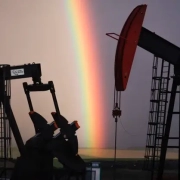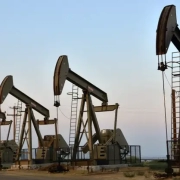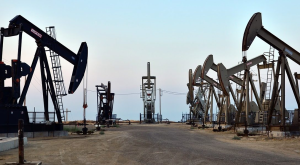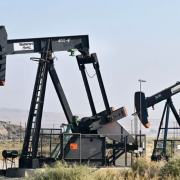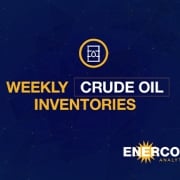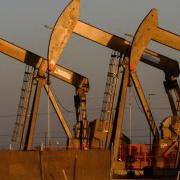Fee Simple vs. Leasehold: Choosing the right type of property ownership is a significant decision that can have long-term financial and lifestyle implications. When it comes to real estate, two primary forms of property ownership are fee simple and leasehold. Each offers unique advantages and disadvantages, making it essential to understand the differences between them. In this comprehensive guide, we will explore fee simple and leasehold ownership, providing you with the information needed to make an informed decision when selecting the right property ownership for your needs.
Understanding Fee Simple Ownership
Fee simple ownership, also known as fee simple absolute or freehold estate, is the most common and straightforward form of property ownership. When you have fee simple ownership of a property, you own both the land and any structures on it. This form of ownership provides the highest level of control and freedom over your property.
Key characteristics of fee simple ownership include:
- Ownership Rights: Fee simple owners have the full bundle of ownership rights, including the right to use, modify, lease, sell, or transfer the property as they see fit. You have the ultimate decision-making authority over your property.
- Indefinite Duration: Fee simple ownership is typically indefinite, lasting for as long as you and your heirs desire. You can pass the property on to your descendants, sell it, or bequeath it to someone in your will.
- Full Control: You have complete control over the property’s development and usage. You can make improvements, alterations, and use it for personal or commercial purposes as you see fit.
- Responsibility: With full ownership comes full responsibility. Fee simple owners are responsible for property taxes, maintenance, insurance, and any legal obligations associated with the property.
- Value Appreciation: Fee simple ownership often results in property appreciation, meaning your property’s value can increase over time. This can be a crucial factor for real estate investors.
Leasehold Ownership Explained
Leasehold ownership, on the other hand, is a more restricted form of property ownership. In a leasehold arrangement, you own the property for a specified period, but not the land underneath it. Instead, you lease the land from the landowner, typically for a long-term lease period, such as 99 or 999 years. Leasehold ownership is commonly associated with residential and commercial real estate, but its prevalence can vary based on geographic location.
Key characteristics of leasehold ownership include:
- Limited Duration: Leasehold ownership is for a finite period, often ranging from decades to centuries. At the end of the lease term, the property typically reverts to the landowner.
- Ownership Rights: Leasehold owners have the right to use and benefit from the property during the lease term. However, they do not own the land and must adhere to lease terms and conditions.
- Lease Terms: Lease terms can include restrictions on property use, maintenance requirements, and potential rent or lease payments to the landowner.
- Responsibility: Leasehold owners are typically responsible for property maintenance and lease compliance but may not have to pay property taxes directly.
- Value and Depreciation: Leasehold properties may depreciate over time as the lease term approaches its end, potentially affecting the property’s resale value.
Choosing the Right Property Ownership: Fee Simple vs. Leasehold
Selecting the right property ownership depends on your unique circumstances, objectives, and preferences. To make an informed choice between fee simple and leasehold ownership, consider the following factors:
- Duration of Ownership:
- Fee Simple: Offers indefinite ownership, allowing you to pass the property to heirs or sell it at any time.
- Leasehold: Provides ownership for a fixed term. Consider how long you intend to stay in the property and whether you plan to pass it on to future generations.
- Control and Freedom:
- Fee Simple: Offers maximum control and freedom to use and modify the property as you see fit.
- Leasehold: May come with restrictions and requirements outlined in the lease agreement, limiting your control over the property.
- Responsibility and Costs:
- Fee Simple: You are responsible for all property-related costs, including taxes, insurance, maintenance, and improvements.
- Leasehold: You may not be directly responsible for property taxes, but you must adhere to lease terms, which may include maintenance and rent payments.
- Appreciation and Depreciation:
- Fee Simple: Fee simple properties often appreciate in value over time, potentially resulting in a profitable investment.
- Leasehold: Leasehold properties may depreciate as the lease term nears its end, affecting resale value.
- Location and Availability:
- Fee Simple: Fee simple ownership is more common and readily available in many regions.
- Leasehold: Leasehold ownership is more prevalent in specific locations and property types, such as leasehold apartments or commercial buildings.
- Lifestyle and Future Plans:
- Fee Simple: Suitable for individuals or families seeking long-term ownership and the flexibility to use or modify the property as they wish.
- Leasehold: May be appropriate for those who want to reside in a specific location for a set period or have more flexibility in terms of changing properties.
- Investment and Risk Tolerance:
- Fee Simple: Often seen as a stable and appreciating investment, but comes with higher costs and responsibilities.
- Leasehold: May offer lower upfront costs, but the potential for depreciation and restrictions should be considered.
- Legal and Financial Advice:
Before making a decision, it’s crucial to consult with legal and financial professionals who can provide guidance based on your specific circumstances and local real estate laws and regulations.
Specific Considerations for Leasehold Ownership
If you are considering leasehold ownership, here are some additional factors to keep in mind:
- Lease Terms: Review the lease agreement thoroughly. Understand the terms and conditions, including rent or lease payments, restrictions on property use, and maintenance responsibilities.
- Lease Renewal: Check whether the lease agreement allows for renewal or extension. If so, be aware of the potential costs and conditions for renewal.
- Landlord and Leaseholder Relationship: A good relationship with the landowner or landlord is essential. Clear communication and understanding of lease terms can help avoid disputes and ensure a smooth leasehold experience.
- Exit Strategy: Consider your options at the end of the lease term. You may choose to renew the lease, negotiate new terms, or explore other property ownership options.
Fee Simple vs. Leasehold
Fee Simple vs. Leasehold: The choice between fee simple and leasehold ownership is a critical decision when investing in real estate or purchasing a property. Each form of ownership has distinct advantages and disadvantages, making it essential to align your choice with your objectives, preferences, and financial situation.
Fee simple ownership offers maximum control and long-term stability, while leasehold ownership can be a more flexible and cost-effective option for specific lifestyles and timeframes. Whether you opt for fee simple or leasehold, thorough research, legal advice, and an understanding of local real estate laws are essential to make an informed decision and enjoy a successful property ownership experience. Remember that the right choice depends on your individual circumstances and long-term goals.
If you have further questions about the topic related to Oil and Gas Royalties, feel free to contact us here.




